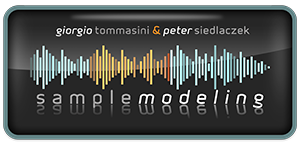Suggestion/Help, The Possibility/Addition of Fingered Legato
String player and composer here.
I'm at a particular passage I am trying to recreate from my score that involves a smooth continuity of sound from the string players via slur/fingered legato, however, the SMS&ES seems to rely solely on a transition/bow legato style.
This legato style DOES sound good and quite realistic, however, achieving the aforementioned style of legato would open endless possibilities of expression and realistic sound, which leads me to two questions:
- Is it possible to obtain this type of legato in the current iteration of the VST? It's much like SWAMS default approach to legato, and will post a helpful reference below to the kind of performance I'm looking to match :)
- If not, would it be possible to add this style of legato to the library? Slur/Fingered legato is incredibly prevalent in expressive orchestral work, so would be absolutely elated to see it in what is a near perfect, do-it-all VST.
An example of this legato can be heard right away from the ever so iconic Bach Partita No.2 Gigue
https://www.youtube.com/watch?v=7eXzlg2Xcgg
(And a slower performance)
https://www.youtube.com/watch?v=Jv9ofibOSpo
It is also an essential component of Schindler's List


Comments
I (not very perfectly) do live playing with the solo Violin using the Seaboard.
I understand that when shifting the finger pressure from one "key" to the next a nice kind of slur/fingered legato is performed.
In this case the seaboard sends pitchbend Midi mesages to Kontakt and no note events.
I can "slur" about an octave uń that way, which sound rather nice, even though I suppose a hardware violine can't do that
BTW.: any vibrato is done in the same way by wiggling the finger on a "key". I don't use any "automatic"/"artificial" vibrato with the Violin.
-Michael
Useful info, but what I'm really trying to get at is the completely reduce the "gap" in between notes.
While playing and messing with CCs, there seems to be a notable gap of sound between my legato notes, and messing with CCs doesn't seem to affect this.
My end goal is to reduce this gap, to simulate a fingered legato of the likes of which I can achieve by either using something like Swam, LASS, or a real violin.
How does one get rid of this gap in sound in transitions?
Pitchbend never results in a gap.
-Michael
Hi Thor,
the function is already implemented into the Library engine, and is the combination between the velocity (low velocity are creating a more slurred legato, and don't influence the dynamic being controlled by cc11 expression) and the cc 26 (attack time).
A very high value of cc26 drive to a slur, then a portamento, and finally (at 127) to a glissando.
Last but not least, a large interval can be obtained "composing" 2 (or more) intermediate notes creating "steps" of the slur: the benefit is you may fine tune the style and amount of "sections" of the slur: e.g. make a 4rth out of a first whole tone with a portamento, and fill the minor 3rd rest with pitch bend or viceversa, according the dynamic and smoothing you desire.
The reason is the pitch bend will keep the main dynamic and colour of the tone. then it's more effective for slide effect like country, romantic or Tzigane portamentos, while the automatic portamento and slur got by the velocity + cc26 has the more common slur attitude, a muffled dynamic and tone coming from the (usually faster and masked/smoothed by the player) fingering.
I hope it helps, I recommend to try combinations of low velocities nd high cc26 until you get the sound, and then complement with pitch bend if and when it's requested.
Thank you Fabio And Michael, with the combination of both of your advice I've found a way get quite close and well simulate slur/fingered legato.
What I did was set cc26 to 0, set Portamento time to directly controlled by cc5, then set cc5 to nothing.
With these settings, playing with legato creates a very seamless stream of transitions that aren't quite audible in a mix, making those buttery smooth passages which rely on continuous sound much more pleasant to the ear. Will keep these settings in a separate channel for passages that need this, so I can go back and forth from the 2 legatos, and I'm all set 😀
Super grateful for the help, this VST is quite unconventional but incredibly useful!
Good idea. It was designed for wind controllers, but it leverages on the portamento engine bypassing the velocity, so more in direct control.
I like also the separate channel approach, something I also did often to simplify programming when requested.